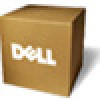Dell DVS Simplified Appliance Tower Reference Guide - Page 33
Citrix Desktop Receiver, Virtual Desktop Antivirus, Windows Active Directory Integration
 |
View all Dell DVS Simplified Appliance Tower manuals
Add to My Manuals
Save this manual to your list of manuals |
Page 33 highlights
5.7 Citrix Desktop Receiver The Citrix Desktop Receiver is a client-based plug-in that is installed on the user‖s endpoint device. This is to be used in-conjunction with Citrix VDI-in-a-Box when the user requires the ability to interact with their local desktop as well as the virtual desktop. This package provides the toolbar functionality, allowing the user to pan and scale their virtual desktop inside their local desktop. When a user logs into a VDI-in-a-Box site to access a virtual desktop, the web site can detect that the Citrix Desktop Receiver is absent from endpoint devices and automatically prompt users to download and install it from the site. Click HERE for more information on the Citrix Desktop Receiver. 5.8 Virtual Desktop Antivirus When using hosted VM-based VDI desktops, those virtual desktops are located within the data center and/or on the network with other critical systems. If a virus makes it into the data center, the entire infrastructure can be at serious risk. Therefore, it is highly recommended to employ an agent-based anti-virus solution that has the ability to scan and monitor the DVS Simplified Appliance appliance(s) as well. Since the virtual desktops will be based on a single read-only image streamed from the DVS Simplified appliance, there are a number of exclusions that can be configured to optimize performance of the on-access or real-time scanning. Exclusion C:\*.* Exclude Subfolders Yes Pagefile.sys No C:\windows\system32\spool Yes Read/Write Notes Read This prevents files from the C drive of the desktops being scanned since these are scanned prior to setting the drive as read only, from which point on no permanent changes will be maintained across reboots of a machine. Any files written (e.g. temporary files will be scanned on write) Read/Write Windows swap file Read/Write Print spooler directory - Best practice 5.9 Windows Active Directory Integration Active Directory (AD) is required for user authentication for desktops in the Windows Domain. You can use any read-only user account from AD to provide authentication. You 30 Dell DVS Simplified Appliance Reference Architecture















